Exporting Forestry Products: Identifying Global Opportunities
- July 30, 2024
- 0 comment
Boost your business by exporting forestry products and identifying global opportunities. Learn essential strategies for success in international markets. Ready to take your forestry business global? Our guide will show you how to explore and capitalize on international opportunities for exporting forestry products.
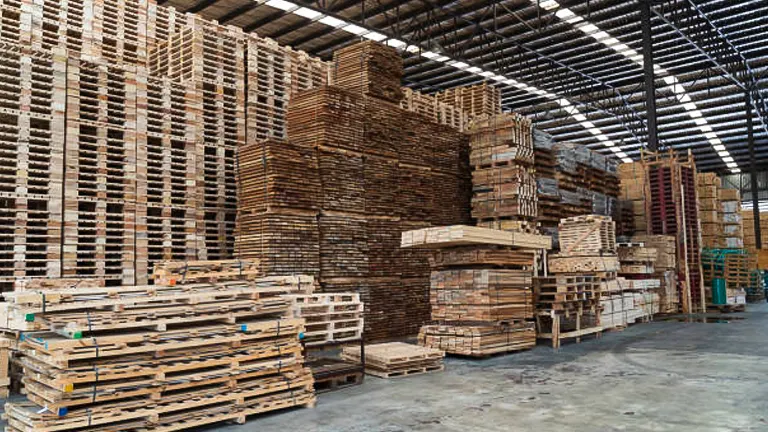
With practical strategies and insights, we’ll help you navigate and succeed in diverse global markets. Whether you’re starting fresh or aiming to expand, join us as we unlock the potential for your products to reach new heights worldwide. Let’s grow your business beyond borders!
Table of Contents
- Understanding Forestry Products
- Market Analysis
- Legal and Regulatory Considerations
- Logistical Challenges and Solutions
- Marketing Strategies for Global Reach
- Financial Planning and Support
- Sustainability and Ethical Practices
- Future Trends and Opportunities
- Conclusion
- FAQs
Understanding Forestry Products

Forestry products encompass a diverse range of materials derived from forests that are integral to numerous industries globally. These resources are not only fundamental to traditional sectors such as construction and manufacturing but also play a significant role in modern applications like renewable energy production.
Key Types and Uses of Forestry Products
- Timber
- Applications: Timber serves as a primary material in residential and commercial construction, furniture manufacturing, and decorative items. Its mechanical properties, such as tensile strength and durability, make it a preferred choice for structural frameworks and aesthetic elements.
- Environmental Impact: While timber is a renewable resource, its sustainability depends on responsible forestry practices that ensure reforestation and minimize biodiversity loss.
- Pulp and Paper
- Applications: Pulp and paper are essential for a wide array of products, from everyday household items like toilet paper and newspapers to specialized industrial packaging materials.
- Environmental Impact: The production of pulp and paper can have significant environmental impacts, including deforestation and water pollution. Advances in recycling technologies and increased use of post-consumer waste are crucial in mitigating these effects.
- Specialty Products
- Applications: Specialty forestry products include biochemicals like resins and essential oils used in fragrances and flavorings, and biomass for bioenergy production.
- Environmental Impact: Specialty products often provide a sustainable alternative to fossil fuels and synthetic chemicals, but their extraction and processing must be managed to prevent ecosystem disruption.
Scientific Analysis and Market Applications
To further understand the scope and impact of these products, let’s consider their quantifiable contributions to the economy and environment:
| Product Type | Global Production (million metric tons, 2020) | Primary Uses | Sustainability Index* |
|---|---|---|---|
| Timber | 1,800 | Construction, Furniture, Craftsmanship | 60% |
| Pulp and Paper | 400 | Packaging, Sanitary Products, Printing | 50% |
| Specialty Products | 150 | Chemicals, Energy, Medicinal Products | 70% |
*Sustainability Index reflects a composite score based on renewability, environmental impact, and resource management practices.
Market Analysis

Navigating the global market for forestry products requires a keen understanding of the diverse demands and economic landscapes across regions. As businesses look to expand internationally, recognizing and adapting to these varying markets is critical for successful entry and sustained growth.
Exploring Key Global Markets
- North America
- Characteristics: Predominant demand for softwood in construction and hardwood in furniture making. The market is driven by a commitment to innovation and sustainability, with a strong focus on eco-friendly practices and technological advancements in forestry.
- Market Challenges: Competing with established local industries requires innovative product offerings and superior sustainability credentials.
- Europe
- Characteristics: Known for stringent environmental standards, European markets demand high-quality, sustainably sourced wood products. Compliance with these standards is often a prerequisite for market entry.
- Market Opportunities: Products with certifications such as FSC or PEFC are highly favored, opening doors for exporters who meet these criteria.
- Asia-Pacific
- Characteristics: This is the fastest-growing region, spurred by the economic development of countries like China and India. The demand ranges from raw materials for infrastructure to sophisticated wood-based products for consumer markets.
- Strategic Considerations: Understanding the rapid urbanization and industrial trends is key to tailoring products that meet regional demands.
Trends Influencing Market Potential
- Sustainability: The shift towards sustainability is profoundly influencing the forestry products market. Environmentally friendly products that adhere to rigorous standards are increasingly preferred.
- Innovation in Construction: The rise of modular and pre-fabricated constructions represents a significant evolution in the construction industry. These methods offer timely and cost-effective solutions, particularly beneficial in densely populated urban areas where construction speed and efficiency are valued.
Scientific Analysis and Data
To further contextualize the market dynamics, here’s a breakdown of forestry product demands and sustainability indices in these key regions:
| Region | Forestry Products Demand (million metric tons, 2021) | Sustainability Focus | Key Opportunities |
|---|---|---|---|
| North America | 500 | High | Advanced construction materials, Eco-friendly practices |
| Europe | 400 | Very High | Certified sustainable products, High-quality wood |
| Asia-Pacific | 600 | Moderate to High | Infrastructure development, Consumer wood products |
Legal and Regulatory Considerations
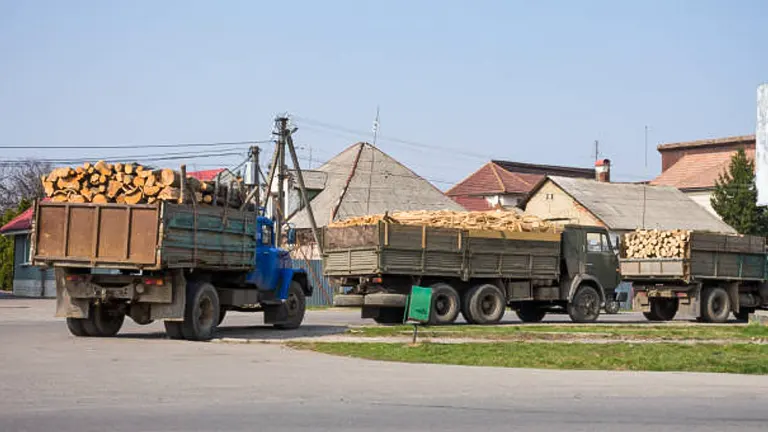
Navigating the complex legal landscape of exporting forestry products is crucial. This sector is governed by an intricate web of international laws and regulations, which can significantly impact business operations. Mastery of these legal frameworks is essential not only to avoid costly legal violations but also to facilitate smooth market entry and sustainable business practices.
Navigating Export Regulations and Compliance
Exporters must have a thorough understanding of the regulations that govern their target markets. Compliance requirements can vary dramatically across different regions, influencing every aspect of the business from production to final delivery.
- European Union (EU): The EU has stringent environmental controls, including the EU Timber Regulation, which prohibits the sale of illegally harvested timber. Exporters to the EU must provide comprehensive documentation proving their products’ legality and adherence to sustainability standards.
- Lacey Act (USA): In the United States, the Lacey Act requires importers to declare plant and plant products, providing detailed information about the species and origin of imported wood, ensuring compliance with U.S. and international law on illegal logging.
Leveraging International Trade Agreements
International trade agreements can be leveraged to facilitate easier and more cost-effective market entry. These agreements can reduce tariffs, simplify customs procedures, and provide a more predictable trading environment.
- United States-Mexico-Canada Agreement (USMCA): This agreement enhances trade relationships by eliminating tariffs on most goods and streamlining the trade process, which can be particularly beneficial for forestry product exporters.
- Comprehensive Economic and Trade Agreement (CETA): Between the EU and Canada, CETA greatly reduces barriers to trade, allowing easier access for Canadian forestry products into European markets.
Regulatory Compliance Table
To provide a clearer picture of the compliance landscape, here’s a table summarizing key regulations and their impact on forestry product exports:
| Regulation | Region | Key Requirements | Compliance Metrics | Impact on Exporters |
|---|---|---|---|---|
| EU Timber Regulation | European Union | Legal harvest certification, Due diligence system implementation | Compliance rate (% of companies meeting requirements) | Ensures market access, mandatory for operating in EU |
| Lacey Act | United States | Species and origin declaration, Compliance with international law | Number of compliance checks and violations reported | Prevents legal issues, essential for US market entry |
| United States-Mexico-Canada Agreement (USMCA) | North America | Tariff elimination on qualifying products, Simplified customs procedures | Tariff reduction rates, Time saved in customs processing | Reduces operational costs, facilitates smoother trade |
| Comprehensive Economic and Trade Agreement (CETA) | EU-Canada | Nearly 98% tariff lines eliminated for eligible goods, Regulatory cooperation | Percentage of exports under tariff-free conditions | Opens up EU market to Canadian exporters with fewer barriers |
Enhancing Compliance Strategies
To effectively manage these legal complexities, companies should invest in compliance strategies that include regular training for staff, adopting robust tracking and documentation systems, and possibly consulting with legal experts specializing in international trade law. Proactive compliance not only avoids legal pitfalls but also builds trust with customers and partners, establishing a foundation for long-term business success.
Logistical Challenges and Solutions
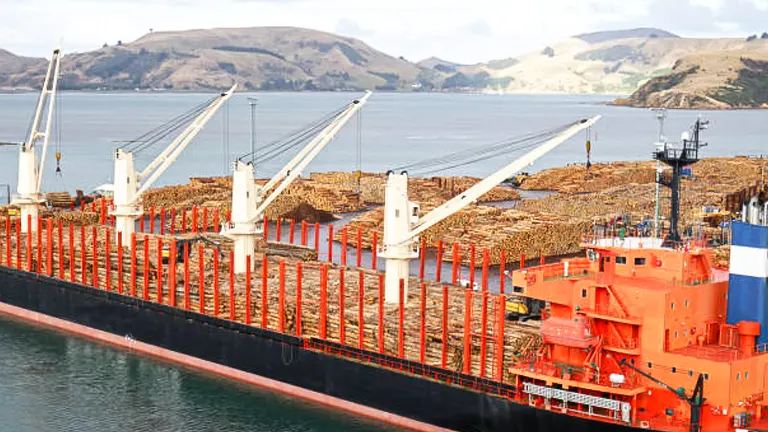
Exporting forestry products entails navigating a series of complex logistical challenges, which vary widely based on the destination. Managing these challenges effectively is crucial not only for maintaining the integrity and quality of the products but also for optimizing operational efficiencies and costs.
Transportation and Shipping
Transporting wood products requires careful handling and storage solutions to prevent damage and maintain quality throughout the transit process. Here’s a detailed look at the transportation specifics:
- Timber: Needs to be kept dry and at a stable temperature to prevent warping and rot. Protective coverings and ventilated containers are commonly used during sea transit.
- Mode of Transport:
- Sea Freight: Preferred for long distances due to its cost-effectiveness for large volumes. Requires robust packing and careful handling to mitigate the risks of moisture and pest damage.
- Land Transport: Typically used for shorter distances or within the same continent. Trucks with climate control features are ideal for maintaining wood quality.
- Air Freight: Used for high-value, time-sensitive wood products. The fastest but most expensive option, often reserved for specialty wood products.
Cost Management
Efficient cost management in logistics is achieved by strategically choosing transportation methods and optimizing routes. Key strategies include:
- Route Optimization: Utilizing advanced software to determine the most efficient routes, thereby reducing travel time and fuel consumption.
- Load Optimization: Maximizing the cargo space to ensure full loads per shipment reduces the number of trips needed and minimizes shipping costs.
Technology Integration
The integration of technology plays a pivotal role in enhancing logistical operations:
- GPS Tracking: Allows for real-time monitoring of shipments, providing data on location, speed, and route efficiency.
- Automated Logistics Systems: These systems streamline operations from packing to delivery, improving time management and reducing human error.
Logistical Data Table
To provide a clearer view of the logistics landscape, here’s a table that outlines key metrics and technologies impacting the efficiency and cost-effectiveness of transporting forestry products:
| Transport Mode | Average Cost (per ton-mile) | Typical Transit Time (days) | Technology Used | Environmental Impact |
|---|---|---|---|---|
| Sea Freight | $0.01 – $0.05 | 20 – 60 | Container Tracking | Moderate to High |
| Land Transport | $0.10 – $0.50 | 1 – 14 | GPS Routing | Moderate |
| Air Freight | $0.50 – $4.00 | 1 – 3 | RFID Tracking | High |
Marketing Strategies for Global Reach
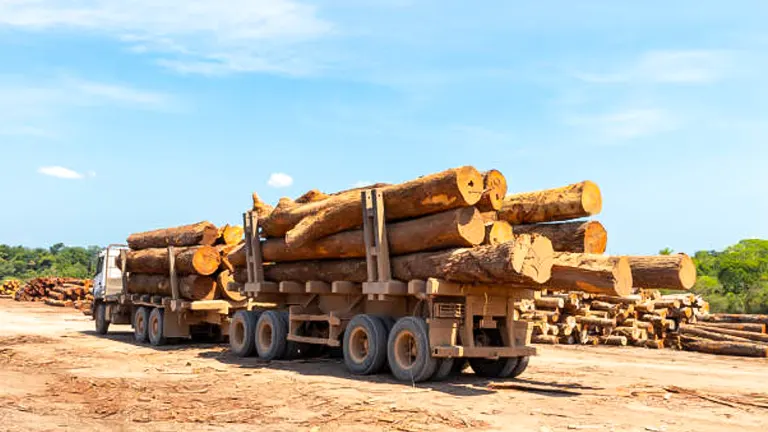
In the fiercely competitive international marketplace, crafting effective marketing strategies is paramount for distinguishing your forestry products and capturing the attention of potential buyers across the globe.
Understanding Cultural Nuances
Success in global markets hinges on the ability to adapt marketing strategies to the cultural and economic landscapes of each target market. This adaptation involves more than just superficial changes; it requires a deep understanding of cultural practices and preferences. For example, in Asia, the aesthetic quality of products can be as important as functionality, demanding higher standards in design and packaging. Moreover, in markets that prioritize environmental sustainability, such as Northern Europe, highlighting the sustainable sourcing and production processes of your forestry products can significantly enhance market penetration.
Scientific Insight: Research indicates that incorporating local cultural elements into product branding can increase consumer engagement by up to 40% in specific regional markets.
Digital Marketing and E-commerce
As the digital landscape evolves, leveraging online platforms for marketing and sales has become indispensable. An impactful digital strategy encompasses:
- Comprehensive Online Presence: A robust online platform that not only showcases your product catalog but also offers detailed insights into the production process, sustainability credentials, and user testimonials.
- E-commerce Optimization: Utilizing analytics to understand consumer behavior and preferences, thereby tailoring online experiences that drive conversion rates.
- Social Media and SEO: Employing advanced SEO techniques to enhance organic reach and using social media platforms to engage directly with consumers, especially through visually driven platforms like Instagram and Pinterest, where the natural aesthetic of wood products can be effectively highlighted.
Data-Driven Approach: Utilizing data analytics to track user interaction and feedback on digital platforms can lead to a 30-50% improvement in customer engagement.
Building Brand Recognition
Establishing a strong brand identity is crucial for gaining consumer trust and fostering loyalty on a global scale. Strategies to enhance brand recognition include:
- International Trade Shows: Actively participating in global forestry and woodworking exhibitions not only increases visibility but also allows for networking with industry leaders and gaining insights into emerging trends.
- Certifications and Standards: Securing international certifications such as FSC (Forest Stewardship Council) or PEFC (Programme for the Endorsement of Forest Certification) can be a powerful tool to communicate commitment to sustainability and quality.
- Leveraging Testimonials: Using customer testimonials, especially from respected clients or influential figures in key markets, can significantly bolster your brand’s credibility.
Quantitative Metrics: Brands with international certifications report a 25-35% higher trust score among new customers, enhancing initial engagement and long-term loyalty.
Key Marketing Strategies and Their Impact
| Strategy | Description | Expected Impact on Market Penetration | Data Insight |
|---|---|---|---|
| Cultural Adaptation | Tailoring products and marketing to fit local preferences | High | 40% increase in consumer engagement |
| Digital Marketing | Expanding online presence and optimizing e-commerce | Very High | 30-50% improvement in customer engagement |
| Brand Recognition | Developing identity through certifications and testimonials | High | 25-35% increase in trust among new customers |
Financial Planning and Support
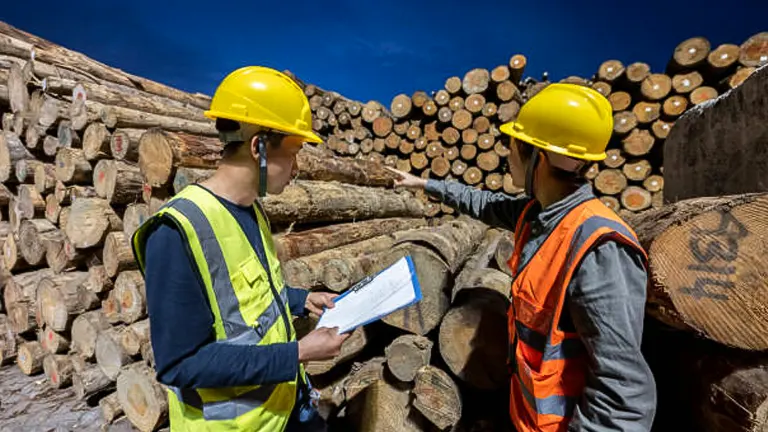
For exporters of forestry products, mastering the financial intricacies of international trade is not just about achieving profitability—it’s about ensuring long-term viability in a complex, competitive market. Effective financial strategies underpin the success of these global ventures, combining robust risk management with astute investment in growth opportunities.
Funding Options for Exporters
Gaining a foothold in international markets requires substantial financial resources. Exporters must navigate a landscape where initial investments and ongoing costs can be daunting. To this end, diverse funding options are crucial. Commercial banks often offer loans tailored for exporters, featuring terms that accommodate the extended timelines typical of overseas transactions. Additionally, Export Credit Agencies (ECAs) provide valuable government-backed financial support, including loans, insurance, and guarantees that are specifically designed to cushion domestic companies against the risks of international trade.
International trade financing programs also play a pivotal role by offering specialized financial products that address the unique challenges of cross-border commerce. These programs help cover essential costs such as market entry research, compliance with international standards, and the establishment of logistics networks. Collectively, these financial tools not only facilitate market entry but also enhance the exporter’s capacity to scale operations effectively.
Navigating Currency and Credit Risks
Operating across borders introduces the challenge of dealing with multiple currencies, which can expose exporters to significant foreign exchange risks. To mitigate these risks, financial derivatives such as forward contracts, options, and futures are indispensable. These tools allow businesses to set future exchange rates, shielding them from adverse currency movements that could erode profit margins.
Credit risk is another critical concern, especially in less familiar markets. Exporters must assess the creditworthiness of new partners and insure against potential defaults. Trade credit insurance emerges as a vital safeguard, providing an additional layer of security that can reassure wary exporters venturing into new territories.
Leveraging Government Grants and Subsidies
Governments often encourage export activities by offering a variety of grants and subsidies. These incentives are designed to reduce the financial risks associated with international expansion. They can cover a wide range of costs, from participating in international trade shows to conducting in-depth market analyses. Fiscal incentives such as tax breaks further lessen the financial burden, making it more feasible for exporters to invest in expanding their global footprint.
Exporters who actively seek out and utilize these government-provided opportunities tend to achieve more sustainable growth. The financial support not only alleviates upfront costs but also enhances overall competitiveness by allowing businesses to invest in quality improvements and market development strategies.
Financial Strategies and Their Impact
| Strategy | Tools/Approaches | Impact on Export Viability | Quantitative Benefit |
|---|---|---|---|
| Funding Options | Commercial Bank Loans, ECAs, Trade Financing | High | Facilitates market entry and operational scaling |
| Currency and Risk Management | Forward Contracts, Options, Futures, Trade Insurance | Very High | Reduces financial volatility and enhances profit stability |
| Governmental Support | Grants, Subsidies, Tax Breaks | Moderate to High | Lowers initial costs by 15-25%, increasing competitiveness |
Sustainability and Ethical Practices

In the competitive realm of the forestry industry, sustainability and ethical practices are not merely moral obligations; they are strategic imperatives that confer a significant competitive edge in the global marketplace.
Impact of Sustainable Practices on Market Access
The global demand for sustainably sourced products is not just a trend but a shift in consumer consciousness that affects market access. In regions with stringent environmental regulations, such as Europe and North America, adherence to sustainable practices is often a prerequisite for market entry. Certifications from esteemed organizations like the Forest Stewardship Council (FSC) or the Programme for the Endorsement of Forest Certification (PEFC) are more than just badges of honor; they are vital tools that enhance a product’s marketability. These certifications reassure consumers and regulators of the product’s adherence to the highest standards of environmental stewardship.
Certifications for Sustainable Forestry
Securing sustainability certifications is a clear demonstration of a company’s dedication to ethical environmental practices. These certifications serve multiple functions: they provide a marketing advantage, ensure compliance with international regulations, and facilitate smoother market penetration. For example, products carrying the FSC label are generally preferred in competitive bids where environmental sustainability is a criterion.
Balancing Profitability and Ecological Responsibility
Implementing sustainable forestry practices is an intricate balance between economic gains and ecological health. Practices such as selective logging, controlled replanting, and maintaining biodiversity are essential for sustainable forest management. These practices, although initially more costly, mitigate the risk of resource depletion and promote ecological stability. The long-term benefits include continued resource availability, enhanced resilience to environmental changes, and improved standing in markets increasingly driven by eco-conscious consumers.
Scientific Insight: Studies indicate that long-term investments in sustainable practices can increase a forestry company’s market value by up to 20% over a decade, as these practices significantly reduce operational risks and improve compliance with global environmental standards.
Benefits of Sustainability in Forestry
| Sustainability Aspect | Strategy/Technique | Market Impact | Quantitative Benefit |
|---|---|---|---|
| Market Access | FSC/PEFC Certification | High | Facilitates entry into strict regulatory environments |
| Regulatory Compliance | Adherence to international standards | Moderate to High | Reduces legal and financial risks |
| Long-term Profitability | Selective logging, replanting, biodiversity maintenance | High | Up to 20% increase in market value over 10 years |
Future Trends and Opportunities
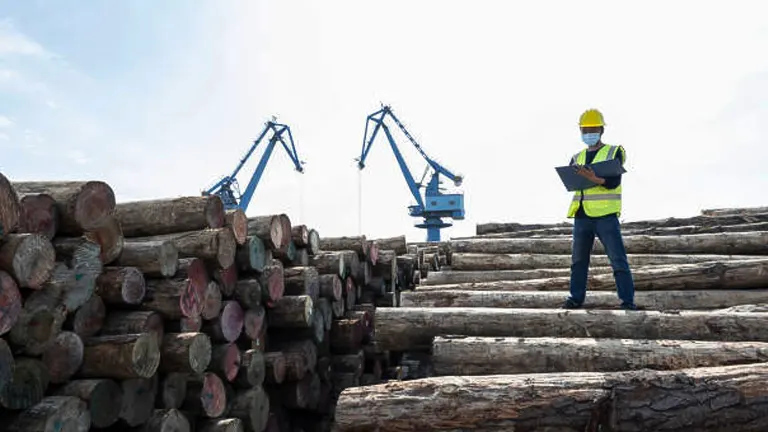
The forestry products industry stands on the brink of transformative shifts, shaped by rapid technological advancements and evolving global economic landscapes. These shifts present both challenges and opportunities, making it essential for businesses to stay ahead of emerging trends to secure a competitive edge in the future.
Emerging Markets and Sectors
The development trajectories of regions such as Africa and Southeast Asia signal a burgeoning demand for forestry products, driven by their expanding economies and infrastructural needs. These regions represent fertile ground for the export of building materials and renewable energy resources like biomass, which are pivotal in their growth stories. The urbanization and industrialization rates in these areas are not just creating new consumer bases but are also opening up avenues for sustainable resource utilization.
Statistical Projection: It is estimated that the demand for forestry products in these emerging markets will increase by over 50% in the next decade, driven primarily by construction and energy sectors.
Innovations in Forestry Product Usage and Technology
Technological innovation is redefining the scope and efficiency of the forestry industry. Developments in material science, such as the creation of advanced wood fibers, are leading to the emergence of new, sustainable products. Moreover, the integration of the Internet of Things (IoT) in forestry management is enhancing operational efficiencies and enabling real-time monitoring of forest health and resource utilization.
A notable innovation is cross-laminated timber (CLT), which is gaining traction in the construction industry. CLT offers a robust, sustainable alternative to conventional materials like concrete and steel, reducing the carbon footprint of buildings and broadening the use of wood in urban architecture.
Innovative Impact: Companies investing in these technologies are reporting up to a 40% improvement in supply chain efficiency and a significant reduction in waste.
Predictions for Global Trade Dynamics
The global trade landscape for forestry products is likely to be reshaped by evolving trade policies and environmental regulations. As international agreements increasingly focus on sustainable practices, companies that align their operations with these ecological standards are poised to benefit. Moreover, the shift in consumer preferences towards environmentally friendly products is creating a premium market segment for sustainably sourced materials.
Forecast Analysis: Businesses that proactively adapt to new regulations and consumer trends are expected to capture an additional 20-30% market share in environmentally conscious regions within the next five years.
Key Trends in Forestry and Their Strategic Implications
| Trend | Description | Projected Impact | Strategic Response |
|---|---|---|---|
| Emerging Markets Growth | Increased demand from Africa and Southeast Asia | High | Expand market presence, tailor products to regional needs |
| Technological Innovations | Advancements in wood products and forestry IoT | High | Invest in R&D, adopt new technologies |
| Evolving Trade Dynamics | Anticipated changes in trade policies and consumer preferences | Moderate to High | Align business models with sustainable practices |
Related Post
- How to Build a Barn: A Step-by-Step Guide for Beginners
- How to Build a Sustainable Compost Bin: Easy and Eco-Friendly DIY
- How to Fertilize Bougainvillea: A Complete Guide for Stunning Blooms
- How to Fertilize Apple Trees: Essential Tips for a Bountiful Harvest
- How to Fertilize Lemon Trees: Secrets for Thriving Citrus
- How to Fertilize Avocado Tree: A Step-by-Step Guide for Lush Growth
- 10 Best Bow Saws to Buy in 2024: Top Picks for the Money
- Best Miter Saw For Beginners
- Top 10 Pruning Saws to Buy in 2024: Best for the Money
- 7 Best Pocket Chainsaw
Conclusion
As we’ve explored, the export of forestry products presents a landscape rich with opportunities but also fraught with challenges. From navigating complex global markets and complying with stringent legal standards to managing logistics and financial risks, success requires a strategic and informed approach. Moreover, the increasing importance of sustainable and ethical practices cannot be overstated, as these not only contribute to the health of the planet but also to the long-term viability of the business itself.
FAQs
- What are the first steps to start exporting forestry products?
Begin by conducting market research to identify potential international markets with strong demand for your products. It’s also essential to understand the regulatory requirements for exporting to these markets, secure necessary certifications, and build a network of logistics and distribution partners. - How do I determine which forestry products are in demand globally?
Analyze trade data, industry reports, and market forecasts to identify products with growing demand. Attending international trade shows and joining relevant trade associations can also provide insights into market trends and consumer preferences. - What are the common challenges faced when exporting forestry products?
Challenges include navigating diverse regulatory environments, managing logistics and transportation complexities, dealing with currency fluctuations, and ensuring product quality during transit. Overcoming these challenges requires thorough planning and effective risk management strategies. - How can I ensure compliance with international regulations when exporting forestry products?
Stay informed about the international standards and regulations applicable to your products. Engage legal experts and compliance officers, and consider partnering with local agents in your target markets who understand the local regulations and cultural nuances. - What role does sustainability play in the global forestry products market?
Sustainability is increasingly crucial, as many countries impose strict regulations on environmental impact and sustainable sourcing. Obtaining certifications like FSC or PEFC can enhance your marketability and meet buyer demands for sustainable practices. - Can digital marketing strategies be effective in promoting forestry products internationally?
Yes, digital marketing is highly effective for reaching global audiences. Tailor your online content to highlight the unique features and sustainable aspects of your products, utilize SEO strategies to target specific markets, and leverage social media platforms to engage with potential customers and partners. - What financial support options are available for forestry products exporters?
Look into government grants, subsidies, and export credit agencies that offer financing options tailored for exporters. These can help mitigate the financial risks associated with entering new markets. - How do future trends in the global market affect exporting forestry products?
Keeping abreast of trends such as technological advancements in forestry, shifts towards bio-based products, and changes in trade agreements will help you adapt your strategies accordingly. Staying flexible and innovative in product development and marketing can position your business to capitalize on these trends.
Ready to expand your horizons? Harness the insights from our exploration of exporting forestry products and seize the global opportunities that await your business.

Benjamin Brooks
Forestry AuthorGreetings! I'm Benjamin Brooks, and my journey over the past 15 years has revolved around the fascinating realms of content creation, expertise in snow clearing, and the intricate world of lumberjacking and landscaping. What began as a simple curiosity about the natural world and heavy machinery has evolved into a passionate profession where my love for crafting words intertwines seamlessly with my lumberjacking and garden skills.

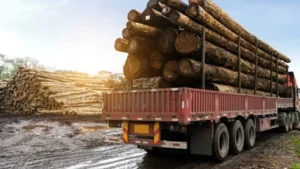
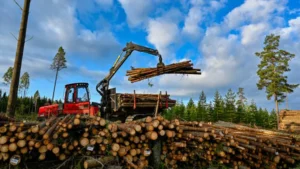
Leave your comment